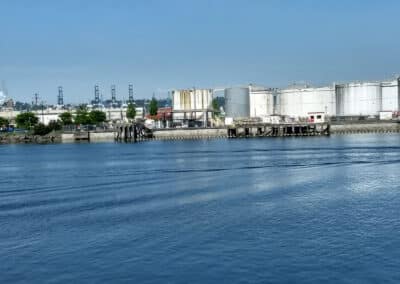How Congress’ Clean Water Goals Get Defeated
Chapter 1: Washington's Outdated Toxic Protection
by Nina Bell • August 27, 2021 •
I suppose that every problem that I identify as a failure to carry out federal environmental laws is a story of how Congress gets defeated, but some of them stand out more than others as the bureaucracy manages to turn Congressional will into mush.
Without going into the long history of how we ended up with the Clean Water Act, passed by Congress in 1972 over President Nixon’s veto, by 1987 Congress had grown disgusted by the EPA and states’ failure to use the law to clean up toxic pollution in the nation’s waters. An amendment that year focused on a range of actions to do just that.
One of the 1987 amendment’s legacies is that states are specifically called upon to update their toxic criteria when they review their water quality standards every three years. When some states failed to do that, in 1992 EPA did it for them. That’s what you could call EPA backbone.
Since that time, EPA’s backbone has been sorely missing.
One result of EPA’s having gone AWOL is the state of Washington’s water quality standards for toxics. Now, many of you know that Washington updated its human health criteria in a process often referred to as the “fish consumption rule.” The reference made sense because it focused on adjusting the allowable level of pollution downward to account for the fact that many people eat more fish and are therefore at greater risk than had previously been assumed.
But what about the fish themselves? And marine mammals that depend on fish? And the birds and mammals that eat even greater amounts of fish relative to their body weight? What happened to their water quality standards?
The answer is: not much.
Protecting the fish themselves has just not been a priority for Washington, even as study after study demonstrates the poisonous attributes of stormwater on salmon, to use one example. The fact is that metals in stormwater—copper, lead, zinc—are far more hazardous to salmon than they are to people.
For instance, when Idaho updated its toxic criteria for aquatic life, the expert federal fish and wildlife agencies found that the EPA-approved levels jeopardize the continued existence of threatened and endangered species, including salmon. Among the problem pollutants: copper, lead, and zinc.
Updates in Oregon and California showed the same thing. This might not be a complete surprise if you consider that many of these criteria date to the 1980s. A lot more science has been done in the ensuing decades.
Washington’s Department of Ecology is now taking public comment on whether it should update its toxic criteria for the protection of aquatic life. That’s nice. Maybe it will, maybe it won’t. It’s not the first time it’s toyed with the idea.
Here, at NWEA, we aren’t waiting around to see if the state can follow the law. In 2013, we filed a petition with EPA to step in and do the state’s job, just the way it did for so many states in 1992. When EPA refused to answer our petition, we took it to court in 2017. The result: EPA denied our petition. Now we’re back in court challenging EPA’s denial. We want Washington’s toxic criteria to protect salmon and the species that depend upon salmon, like the poisoned orcas in Puget Sound.
Round One was EPA’s effort to get the case thrown out of court. The agency lost. Round Two is trial-by-paper, underway now.
It shouldn’t have to be this hard. Congress stamped its foot in 1987 and demanded attention to toxics in the nation’s waters. EPA took it seriously then. Where is the leadership at EPA now?



